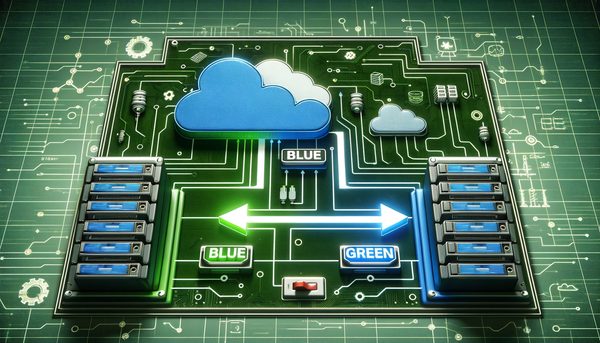In the fast-paced world of software development, maintaining uptime and ensuring a seamless user experience during application updates is crucial. This is where the Blue-Green deployment strategy shines, offering a revolutionary approach to deploying applications with minimal downtime and reduced risk. This 1000-word blog post delves into the intricacies of Blue-Green deployment, exploring its methodology, benefits, challenges, and practical applications in the realm of DevOps.
Understanding Blue-Green Deployment
Blue-Green deployment is a strategy designed to reduce downtime and risks associated with deploying new versions of software. This method involves two identical production environments, conventionally labeled as Blue and Green. At any given time, only one of these environments is live, serving all production traffic, while the other remains idle or is used for staging.
The core concept is simple yet powerful: the Blue environment hosts the current application version, while the Green environment is updated with the new version. Once the new version on Green is fully tested and deemed ready for release, traffic is directed from Blue to Green. This switch can be instantaneous or gradual, depending on the traffic-routing techniques used.
Advantages of Blue-Green Deployment
- Reduced Downtime: The most significant benefit of Blue-Green deployment is the minimal downtime. Since the new version is deployed in a parallel environment, users continue to access the application uninterrupted.
- Risk Mitigation: It offers a straightforward rollback strategy. If post-deployment issues arise in the Green environment, traffic can be quickly rerouted back to the Blue environment, ensuring continuous service availability.
- Improved Testing: Testing in a clone of the production environment allows for more accurate and reliable results, ensuring that the new release is free from critical bugs before it goes live.
- Seamless User Experience: Users are generally oblivious to the changeover, as there's no service interruption. This ensures a consistent and positive user experience.
The Deployment Process
The Blue-Green deployment process can be broken down into several key steps:
- Initial Setup: Two identical environments are set up, with one (Blue) serving the live traffic.
- Preparation: The Green environment is prepared with the new application version, ensuring it mirrors the Blue environment’s configuration.
- Testing: Extensive testing is conducted in the Green environment to validate the new release.
- Cutover: Traffic is switched from the Blue to the Green environment. This can be achieved through DNS changes, load balancer reconfiguration, or other routing techniques.
- Monitoring and Rollback: Post-deployment, the Green environment (now live) is closely monitored. If issues are detected, a rollback to the Blue environment is executed.
- Finalization: Once the Green environment is stable, it becomes the new production environment, and the process cycle starts again for the next release.
Challenges and Considerations
Despite its numerous benefits, Blue-Green deployment comes with its own set of challenges:
- Resource Intensive: Maintaining two complete environments doubles the resource requirement, which can be cost-prohibitive for some organizations.
- Data Synchronization: Keeping data synchronized between the two environments, especially in database-driven applications, can be complex.
- Configuration Management: Ensuring both environments are identically configured requires meticulous management.
Practical Applications and Tools
Blue-Green deployment is extensively used in cloud-native environments, where infrastructure can be easily duplicated and managed. Various tools and platforms facilitate this process, including Kubernetes for container orchestration, Terraform for infrastructure as code, and cloud services like AWS, Azure, and Google Cloud Platform.
Conclusion
Blue-Green deployment represents a significant advancement in the way software updates are delivered. By minimizing downtime and mitigating risks, it provides a robust solution for today's dynamic and user-centric application landscapes. As technology progresses, we can anticipate even more refined and automated approaches to this strategy, further cementing its role as a cornerstone in the DevOps playbook.
